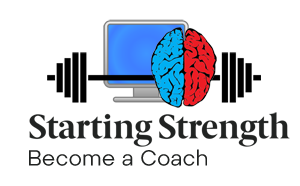What about the stability at the shoulder joint?
It appears to me, the more vertical the back angle, the more the load will be able to be supported by the spine and supporting musculature.
If you have a substantial shoulder lean, it seems as if all the support will be removed from the equation and the load placed directly on the gleno-humeral joint? (where shoulder meets the body) w/o any or minimal skeletal support.
An example:
http://www.youtube.com/watch?v=cSxxajrTO5w
I notice this a lot in lifting clips I've seen, where the catch/reception of the bar will be pretty vertical, but on the recovery the hips shoot back to recruit more muscle mass.
What I'm trying to get at, is at significant load, it seems that receiving the bar w/ a forward lean will effectively rotate the arms backward. This doesn't seem like the strongest position to receive and stabilize the bar. Is this much of an issue?
The other thing I've seen is here:
http://www.youtube.com/watch?v=-zHnAxOZBV0#t=2m27s ...
...where it looks like an individual with a lot of thoracic spine mobility can get some support, as opposed to a person who has to rotate their shoulders backward.
Am I way off base here or what?

















